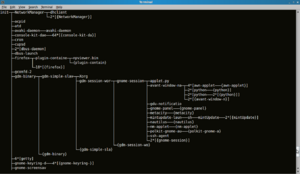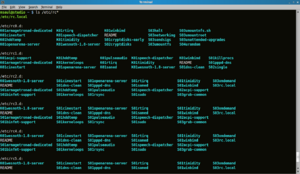Init vs systemd
Contents
Overview
Definition of systemd
- According to Lennart Poettering, the developper of systemd:
- "systemd is a system and session manager for Linux, compatible with SysV and LSB init scripts. systemd provides aggressive parallelization capabilities, uses socket and D-Bus activation for starting devices."
- In Simpler Terms:
- systemd is a more efficient method of controlling processes. It has the flexibility to start services in parallel, and have them communicate with each other, even if they are restarted (respawned). This is particularly useful for system administrators to temporarily service or update services without affecting the other dependent services.
The Old Way: init
|
Why Switch to systemd?
- Why switch to systemd when the concept of init and run levels seemed to work for 40 years?!? If it isn't broke, why try to fix it?!?
- Yes, the concept is very easy to understand. On the other hand, with modern operating systems, there is pressure to "evolve" into more efficent running operating systems. For example, in many ways both Apple creators and Unix/Linux creators have influenced each other to build better operating systems over the past decade. The Apple Mac OSX operating system uses a variation of the Unix kernel. On the other hand, Unix/Linux developpers have noticed Apple's method of running services in parallel as opposed to in sequence.
- Here is an example comparing init vs systemd:
- (Reference: (beyond init: systemd) )
- The init process may force certain services to be launched in a particular sequence. For example, the Bluetooth process cannot launch until the avahi process launches. On the other hand, the avahi process cannot launch until the D-BUS process launches, which cannot start until the syslog process is launched.
| syslog V | D-Bus V | Avahi V | BlueTooth V
- The traditional method can take time, and cause problems if a dependent process restarts.
- On the other hand, systemd launches all process in parallel (at same time), but allows them to communicate with each other (via sockets) for "on-demand" communication. This helps to improve efficiencies when running services, and makes it easier for system administrators to update services without "side effects" to the other dependent services.
| syslog | D-Bus | Avahi | BlueTooth V V V V
- Note: Although Linux operating systems (other than Fedora) still use init, systemd is compatible with init, but systemd is likely to replace init for all Unix/Linux distributions in the future...
The New Way: systemd
System Units
- Services are organized in terms of units which consist of a name and a type which correspond to a configuration file.
There are seven different types of units:
|
service |
Processes (daemons) start/stop/restart/reload |
| socket | Define communication channel (for other services) |
| device | Recognise hardware device (plug & play) |
| mount | Connect device to file system |
| automount | Automatically connect device to file system (bootup) |
| target | Groups related services (dependency) |
| snapshot | Reference other units |
NOTE: For this tutorial resource, we only focus on the service unit.
systemd Command Usage
|
Stop Service |
systemctl stop name.service |
|
Start Service |
systemctl start name.service |
| Restart Service | systemctl restart name.service |
| Display Service Status | systemctl status name.service |
| Enable Service | systemctl enable name.service |
| Disable Service | systemctl disable name.service |
| Listing Running Services | systemctl --list-units |
| Display Status of all Services | systemctl --list-units --all |
Additional Resources
- YouTube Video (beyond init: systemd): (beyond init: systemd)

